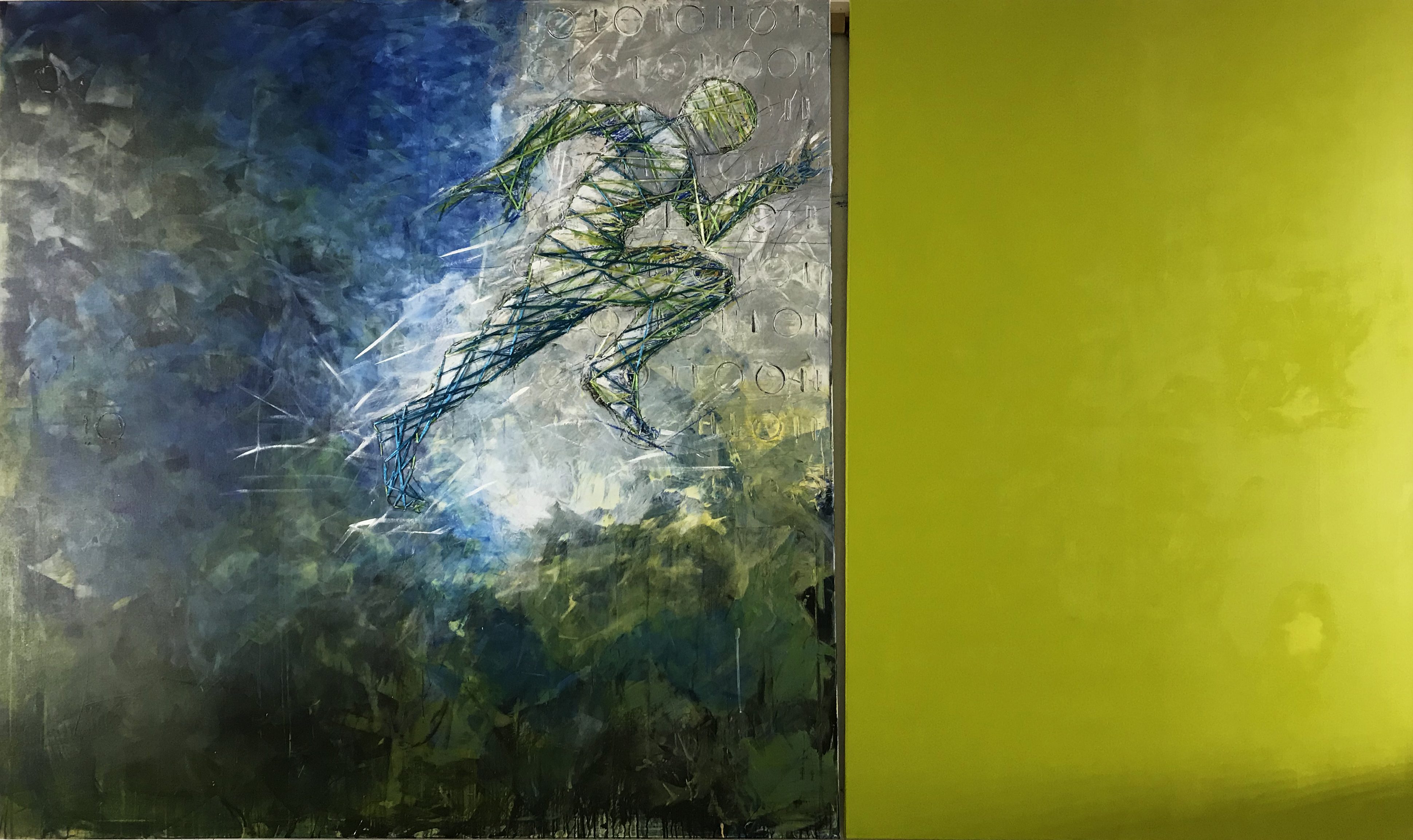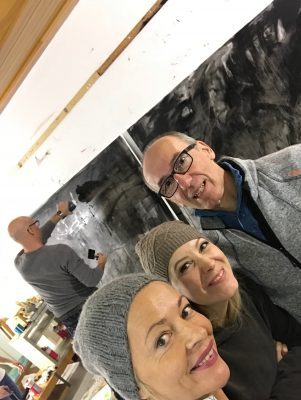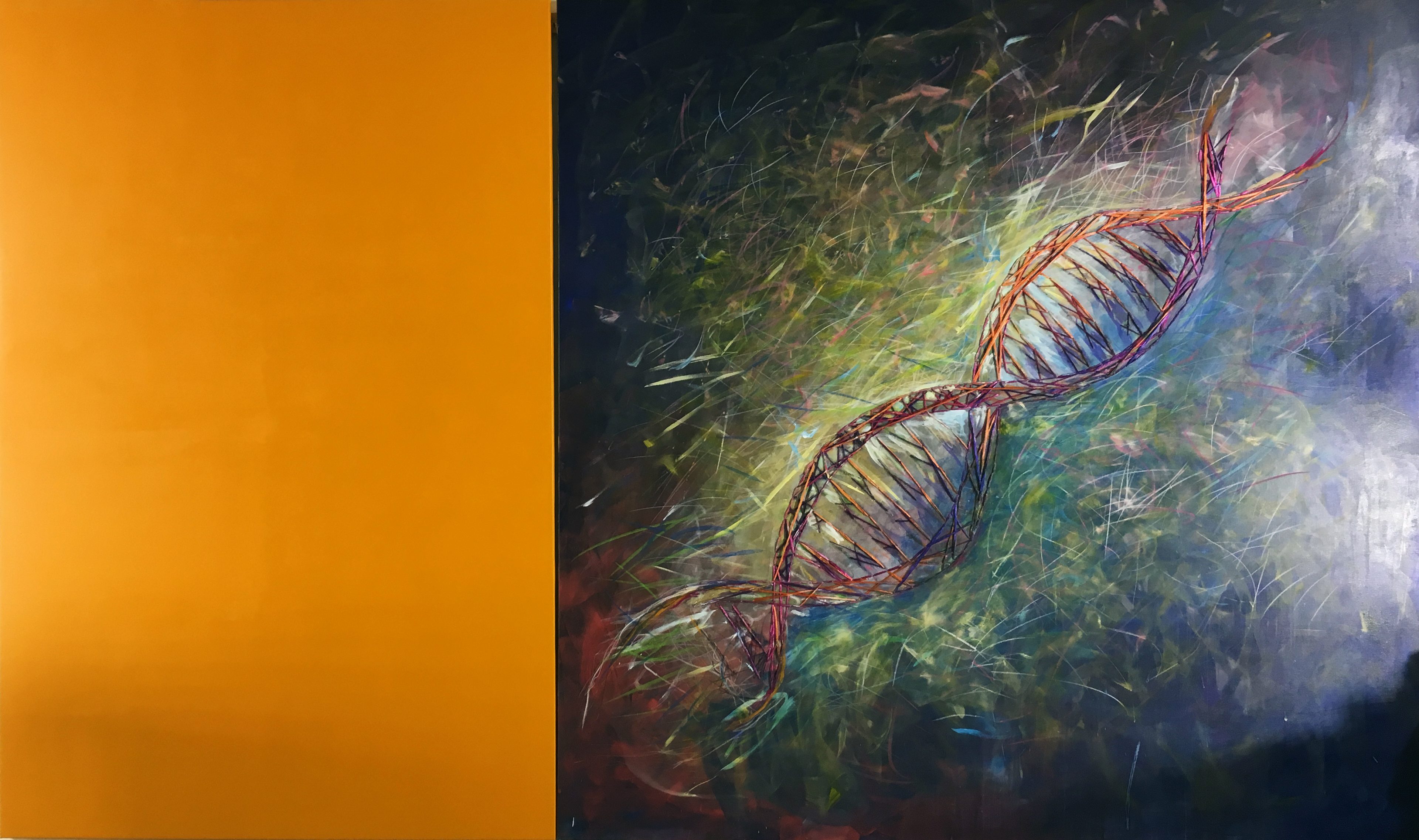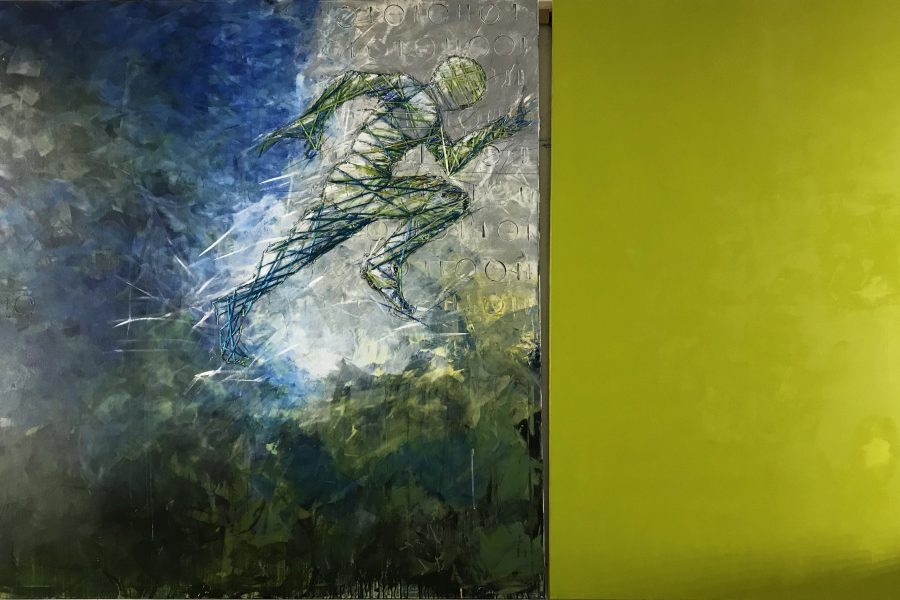
An unprecedented project was presented within Porsche Informatik at the annual kickoff meeting. It involved using art to visualise what our company stands for. The pictures that were created will be hung up in our stairwells. In our interview, Michaela Alker and Leo Strauß from the art group talked about the development process and their experiences during it.
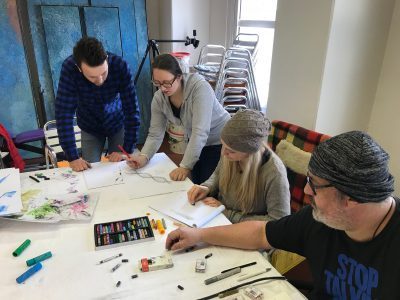 What gave you the idea for the two pictures, and how was the project born?
What gave you the idea for the two pictures, and how was the project born?
Michaela Alker: It started with a subgroup of change agents, whose task it was to visualise the work, mission and values of Porsche Informatik. We came up with lots of ideas for how to make the new strategy and our transformation visible and tangible. One of these was to represent them as works of art. Our directors Rainer Trischak and Manfred Immitzer loved the idea and gave us the green light to hold two workshops with the painter Thomas Novotny.
How did you come up with the two motifs ?
Leo Strauß: The original idea was to design all eight stairwells at the same time. But we quickly realised that this wouldn’t really work. We had a rethink and decided to concentrate on just two subjects. It didn’t take us long to come up with the idea of using the runner from our image video. The other idea was to represent our values in the form of pictures. But just before our first workshop, our company’s complex of values shifted towards ‘Porsche Informatik genes’, and Manfred and Rainer asked us to incorporate this into our work. This resulted in us creating the double helix in the studio.
Michaela: The background of the double helix picture is the universe, a state of chaos from which things must first take shape. The double helix is evolving against this backdrop, moving in the new direction that Porsche Informatik has decided to take. In turn, this new direction is symbolised by the runner. We also included the binary numbers in this picture – these represent digitalisation, i.e. the pathway to our future.
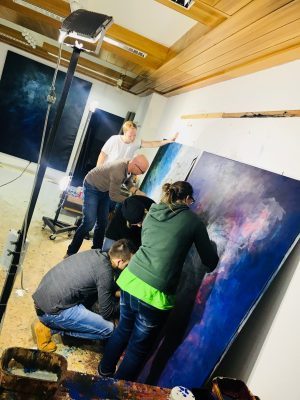 How was the team of painters composed?
How was the team of painters composed?
Michaela: On the one hand, it included the members of the change agent subgroup: Leo, Verena Reinbacher and myself. After a group email to all our colleagues, asking people to take part in the art project, Gerald Nezerka, Tristan Gal and Billie Knoll then got on board. Last but not least, Ruben Blaszczyk also decided to participate.
You enjoyed the support of a professional. How did this come about?
Michaela: I’ve known Thomas Nowotny since my childhood and have followed his career closely. He seemed the right person to help us, especially due to his ‘art in architecture’ projects. After holding a few workshops, in which we shared our ideas and vision, we hit the studio together and started with two blank canvasses.
How did you get on with the painting? What did you learn during the process?
Leo: It went really well. The coach and team worked together in harmony. Thomas kept his distance in the background but was always on hand to help us when needed. Gerald was the only one with any painting experience, and me too to a small extent. But I had always been very careful during my previous few attempts. It was completely different in the workshop, though, where we experimented on the object directly. We created more than 20 different versions of the pictures before the end result. So we were constantly coming up with something new. But the nice thing about it was that we were all happy with it in the end. We kept working on it until everyone said, ‘yes, that’s it.’
Michaela: What I found so fascinating was that seven completely different people all managed to agree. Initially, we’d worked in two teams on one picture each. One of the teams sometimes made more progress than the other, and vice versa. But as a final step we joined forces and all seven of us worked on one picture together.
How would you summarise the experience?
Leo: It was a fantastic experience. We were all so careful and hesitant at first. We didn’t have much confidence and were afraid to make mistakes. But we then realised we can be much wilder, much more dynamic, and much less pedantic. It was a great experience to feel us gradually improving and getting more confident. For me, it was also very special to learn how an artist’s mind works. Whereas my own thoughts tend to be more structured, Thomas is a totally unconventional thinker. It was fascinating to talk to him, and to try and understand what he means by following his thoughts.
Michaela: Thomas found it great that we IT folk are doing something like this and that a large corporation like Porsche is making it possible.
Leo: I agree. We’re very grateful to our management for supporting projects like this one.
Michaela: But it was also a unique team experience. To achieve a result in such a short space of time, you have to make compromises and put your ego aside. It’s about the big picture. The result is what matters most, not personal fulfilment. This is one of the main things that the project taught us.
What would you say to someone who is thinking about participating themselves next time?
Leo: You do need a bit of courage, but it’s a truly unique experience. It’s really helped me to develop on a personal level. After all, when else do you get the chance to work on something with an artist in their own studio?
Michaela: You don’t need any previous experience. But it definitely helps to have an interest in art, creativity, forms, colours and design. There are already a few people who definitely want to participate next time round.

